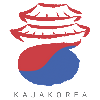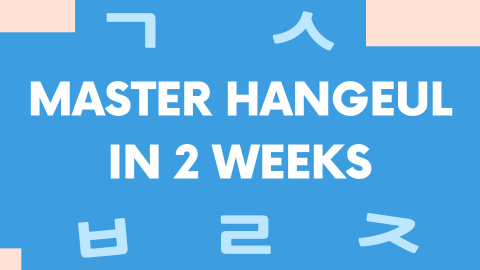Korean Lessons ᚛ Level 2 - Korean for Beginners #1 (Lessons 31 to 60) ᚛ Lesson 46 - How to ask questions in korean, interrogative words
How to ask questions in korean, interrogative words
How to Ask Questions in Korean
In casual and polite speech levels
This is very simple: to ask a question in Korean using the informal or polite style, all you need to do is raise the intonation at the end of a statement, just like in English.
It’s the same as turning the sentence “You ate kimchi.” into a question just by changing your tone: “You ate kimchi?”
김치(를) 먹었어?
→ Did you eat kimchi?
케이팝(을) 좋아해요?
→ Do you like K-pop?
민지야, 숙제 했어?
→ Minji, did you do your homework?
많이 팔았어?
→ Did you sell a lot?
너 나를 좋아해?
→ Do you like me?
집에서 출발했어요?
→ Did you leave from home?
In the formal speech level
In the formal style, asking a question involves changing the verb ending.
In affirmative or negative statements, formal Korean verbs usually end in -ㅂ니다 / -습니다.
To turn these into questions, you replace the ending 다 with 까.
So formal questions end in -ㅂ니까? or -습니까?.
준비됐습니까?
→ Are you ready?
지금 주문 가능합니까?
→ Can I order now? (lit. Is ordering possible now?)
저분은 청소하고 있습니까?
→ Is that person cleaning?
왔습니까?
→ Did he come?
뭐 - What
뭐 is used to refer to something unknown and is usually translated as "what". It is sometimes followed by the subject particle 가 or the object particle 를, depending on whether the unknown thing is the subject or the object of the verb.
Note: 뭐를 is commonly contracted into 뭘.
취미가 뭐예요?
→ What’s your hobby? (lit. “Your hobby, what is it?”)
뭐 먹고 싶어?
→ What do you want to eat?
뭐 생각하고 있어요?
→ What are you thinking about?
뭐가 문제야?
→ What’s the problem?
뭘 보낼 거야?
뭐를 보낼 거야?
→ What are you going to send?
무엇 - What (full form)
Learn more
어디 - Where
어디 is used to ask about a place or location and is usually translated as “where”.
Depending on the context, it can be followed by various particles such as:
Note: 어디를 can be contracted into 어딜, especially in spoken Korean.
어디에 살아요?
→ Where do you live?
어디로 가?
→ Where are you going?
어디에서 출발했어?
→ Where did you leave from?
그 책 어디까지 읽었어요?
→ How far did you read that book? (lit. Up to where did you read in that book?)
어디에서 빌릴 수 있어요?
→ Where can I borrow it?
어디로 보냈어요?
→ Where did you send it?
언제 - When
언제 is used to ask about time and is usually translated as "when".
It can also be combined with particles like 부터 and 까지.
민지 언제 나갔어?
→ When did Minji leave?
언제 만날 거예요?
→ When are we meeting?
언제부터 기다렸어?
→ Since when have you been waiting?
언제 밥 먹었어?
→ When did you eat (a meal)?
언제 출발할 거예요?
→ When will you leave?
언제 왔어요?
→ When did you come?
왜 - Why
왜 simply means “why”, and it can be used on its own without needing any additional structure.
왜 안 왔어?
→ Why didn’t you come?
왜 일어났어요?
→ Why did you wake up?
왜 나를 사랑해?
→ Why do you love me?
어떻게 - How
어떻게 means “how” and is used to ask about a method, a way of doing something, or the manner in which something happened.
그거 어떻게 해요?
→ How do you do that?
이 문제 어떻게 풀어?
→ How do you solve this problem?
그 드라마 어떻게 끝났어?
→ How did that drama end?
어느 - Which / Which one
Learn more
무슨 - What / Which
Learn more
어떤 - What kind of / What type of
Learn more
어때 - How is it? / What do you think?
어때 is used to ask for someone’s opinion or impression about something.
It’s usually translated as “How is it?” or “What do you think of …?”
It always appears at the end of the sentence, and when used in polite speech, you must add 요 → 어때요
이 사진은 어때요?
→ What do you think of this picture?
이 옷 어때?
→ What do you think of these clothes?
저녁밥은 파스타 어때?
→ How about pasta for dinner? (lit. “As for dinner, how’s pasta?”)
누구 - Who
누구 is used to ask which person did an action. It corresponds to “who” in English.
누구 is usually combined with the object particle 를 or the subject particle 가, depending on the grammatical role of the person in the sentence.
- If the person is the subject, 누구 becomes 누가.
- If the person is the object, 누구를 can be contracted into 누굴.
그 사람은 누구야?
→ Who is that person?
내일 누구를 만날 거예요?
→ Who are you going to meet tomorrow?
이거 누가 했어?
→ Who did this?
누굴 기다리고 있어?
→ Who are you waiting for?
누가 네 숙제를 도와줬어?
→ Who helped you with your homework?
누굴 얘기하고 있어요?
→ Who are you talking about?
몇 - How many / What number
몇 is used to ask about a quantity or number of people or things.
It corresponds to “how many” or sometimes “what (number)” in English.
It is generally used together with classifiers to specify the type of thing you're counting (people, hours, items, etc.).
친구는 몇 명 와?
→ How many friends are coming?
몇 시에 일어날 거예요?
→ What time are you going to wake up?
오늘 최고 기온이 몇 도예요?
→ What’s the high temperature today? (lit. Today, how many degrees is the highest temperature?)
얼마 - How much (price)
얼마 is used to ask about the price or cost of something.
When followed by an action verb like 사다 (= to buy) or 팔다 (= to sell), the particle 에 is often added.
얼마예요?
→ How much is it? / What’s the price?
그것을 얼마에 팔았어?
→ How much did you sell it for?
삼겹살 2인분에 얼마예요?
→ How much are two portions of samgyeopsal?
얼마나 - How much / How long / How often
Learn more
Summary table of structure
Learn more
Exercises
Learn more
Coming soon
Learn more

